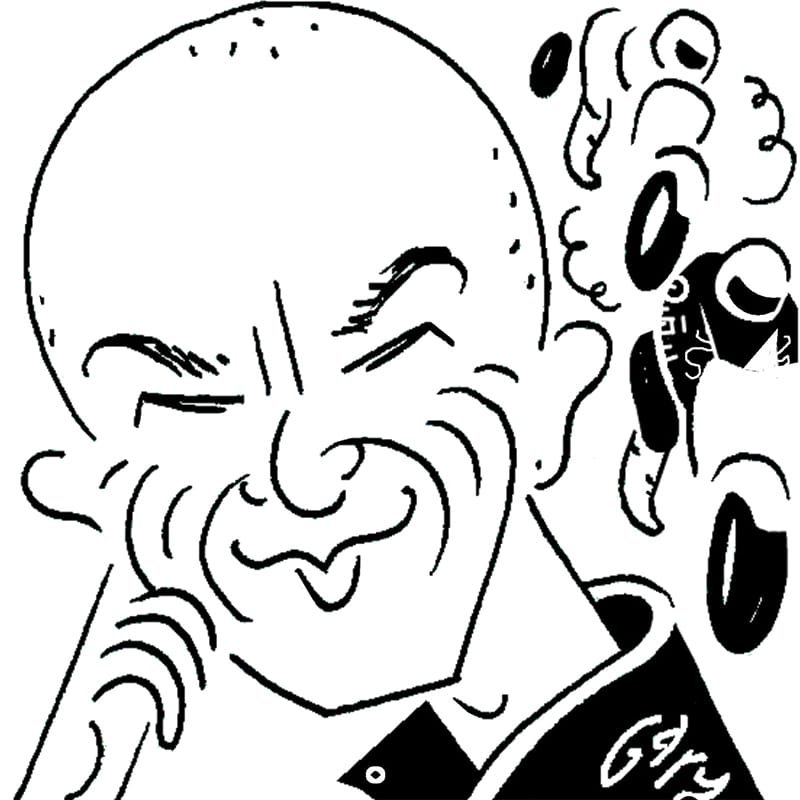Mat Oxley: 'Had Saarinen lived longer, motorcycle GP racing could have been different'
"Jarno Saarinen was destined to become one of motorbike racing’s all-time greats"
Fifty years ago Jarno Saarinen was on his way to winning the 500cc (later MotoGP) world championship for the first time and few people in the know doubted he would go on to become one of motorcycle racing’s all-time greats. In fact, by then the Finnish genius had already transformed the sport, by teaching ‘King’ Kenny Roberts to hang off his motorcycle to improve his lap times. Roberts won a hat-trick of 500cc titles using this technique, which soon became universal.
If Saarinen had lived longer, grand prix racing might have been very different for the rest of the 1970s. Yamaha most likely wouldn’t have signed Giacomo Agostini, who made history by becoming the first two-stroke premier-class world champion, and Barry Sheene would’ve had a much harder time winning the 500 championship with Suzuki.
Saarinen lost his life on the afternoon of May 20, 1973 in an horrific accident during the 250cc Italian GP.
The 27-year-old arrived at Monza as reigning 250 world champion and leading both the 250 and 500 title chases, after winning the opening three 250 GPs and two of the first three 500 GPs aboard Yamaha’s first 500cc GP bike, the 0W19 (his chain broke while he was leading the other). Ironically he was due to skip the subsequent Isle of Man TT, because, like most GP regulars, he considered it too dangerous.
Monza, constructed within a royal park outside Milan in 1922, was mainland Europe’s first purpose-built racetrack but was hardly safe, even in a car. Between 1922 and 1970 the circuit took the lives of 12 drivers and 41 spectators. Following the death of 1970 F1 world champion Jochen Rindt in that year’s Italian F1 GP the circuit was modified, with two chicanes, but these weren’t used by motorcycles.
“Riders pleaded for the track to be cleaned. The officials refused”
GP organisers of those days were renowned for their callousness. Before the start of the Monza 250 GP several riders pleaded with the organisers to clean the track after a motorcycle had dropped oil during the preceding 350 race. The officials refused, then called the police to eject the riders from their offices.
Shortly after 3pm the Italian tricolore was waved to start the 250 race and the packed grid of more than 30 riders heaved their two-stroke twins into angry, smoky life. Former 125cc champion Dieter Braun led the charge. His fast start probably saved his life. Right behind came local hero Renzo Pasolini on his Harley-Davidson, Saarinen and the rest of the pack.
As they swarmed through the first corner, the 140mph Curva Grande, Pasolini’s Harley seized a piston, the machine slewed sideways and threw him off. Saarinen was unable to take avoiding action and also fell. From this point the Curva Grande became a deadly, fiery hell, the scene of arguably the worst accident in motorcycle GP history. A total of 14 riders crashed, while the trackside hay bales were set alight by blazing fuel from ruptured fuel tanks. “It was like a bomb had exploded,” said Australian privateer John Dodds.
Saarinen and Pasolini were run over by following machines, both dying instantly.
Incredibly, the organisers did not stop the race, so it continued with the survivors threading their way through the carnage for a few laps until they gave up and rode into the pitlane, traumatised by what had happened.
“During the first lap no one signalled any warning to me,” said Braun, who had no idea of what had happened behind him. “I came to the Curva Grande for the second time. One rider came running towards me, warning me. I found a way through the inferno. Again on my second lap I never saw any warnings from the marshals…”
Two months later Monza staged a round of the Italian championship, so Dr Claudio Costa, who later created MotoGP’s Clinica Mobile, asked the organisers to place an ambulance at Curva Grande, in case of another pile-up. They refused. Once again a number of riders crashed at the corner. By the time an ambulance arrived three had perished.
“As long as tracks like Monza are used, the rider’s life isn’t worth more than that of a mouse in a mousetrap – nothing,” added Braun.
Twenty-nine riders had died at grand prix events during the previous decade, but it took the Saarinen/Pasolini tragedy to unite the survivors in their push towards improved safety. Most of all they wanted street circuits struck from the calendar and guardrails removed from short circuits. The Isle of Man TT – responsible for more deaths than any other venue – was axed from the championships following 1976 and other street circuits, like Brno and Opatija, followed soon after.
Guardrail – deadly in a crash for riders, who nicknamed it ‘death rails’ – was a more complex problem. Car racing usually makes more money for circuits and promoters, so car racers have more influence and for some years remained convinced that guardrail was a good thing.
In 1982 a group of top GP riders hired former racer Mike Trimby to fight for their rights. The Briton had many battles with circuits, promoters and the sport’s governing body (the Fédération Internationale de Motocyclisme) but step by step he improved safety, won better pay for the riders and got the teams together, like Bernie Ecclestone had done in F1.
Trimby was recently awarded the Torrens Trophy by the Royal Automobile Club for his work. Now 74, he still runs the MotoGP teams’ association, looking after the paddock and grid.
Mat Oxley has covered motorcycle racing for many years – and also has the distinction of being an Isle of Man TT winner
Follow Mat on Twitter




















































































































































































